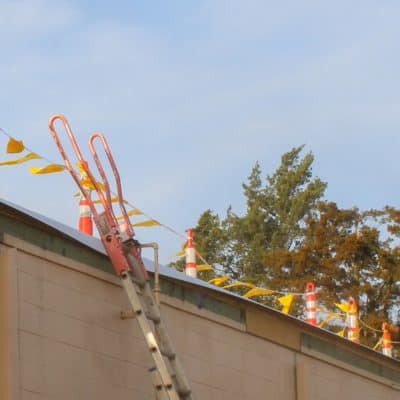Warning lines can be an effective form of fall protection when used properly on low sloped roofs. A low slope roof is defined as a roof that has a slope that is less than or equal to 4/12. If the roofs slope is greater than this, another type of fall protection must be used. OSHA details the requirements in 1926.502 (f).
What is a warning line?
A warning line is a barrier set up around the perimeter of a low sloped roof to warn workers that they are nearing and unprotected edge of the roof or walking surface.
How is a warning line set up? (All requirements below should be met)
- A warning line should keep employees at least 6 feet back from the unprotected edge in combination with a monitor. In some instances, the distance may be further if circumstances require it, such as obstructions, weather, visibility, materials being handled etc.
- If mechanical equipment is being used on the roof, the line should be set 10 feet back from the unprotected edge.
- It should be set up around the entire perimeter, fully enclosing the workers inside.
- The line can be made of wire, rope or chain. The worker should be able to feel it when backed up against. Whichever is used, it must have a tensile strength of 500 lbs.
- High visibility flags should be attached at 6-foot intervals along the line and warning signs should be placed out as well.
- Stanchions must be able to support at least 16 pounds without tipping over once put in place.
- The height of the line at the lowest point must be 34 inches or higher. The highest point of the line must be 39 inches or lower.
- The line must be attached so that when adjusted in one section it does not take up or add slack in another.
- The walkway from the roof to the ladder should have similar protective lines in place. The path should have a similar line across the opening when not entering or exiting the roof.
No workers should enter the area between the warning line and unprotected edge unless protected by a fall protection system. In addition, all material should be set up inside the protected area as well.

